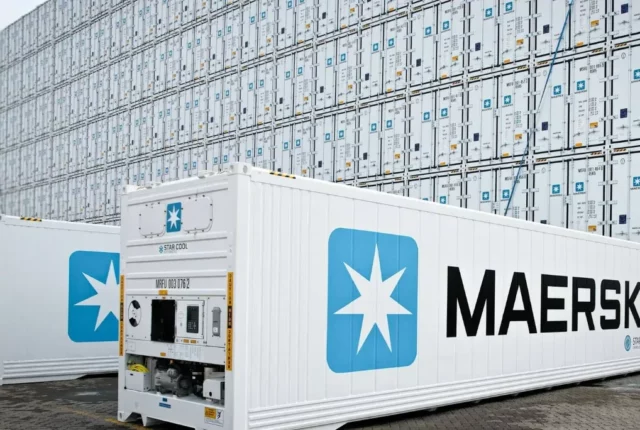
Agile Warehousing: Strategies for Quick Adaptation to Market Changes
In today’s fast-paced business environment, adaptability is key to success. This is especially true in the realm of warehousing, where traditional methods are being replaced by more dynamic and responsive approaches. In this article, we will explore the concept of Agile Warehousing and delve into strategies that enable quick adaptation to market changes.
Definition of Agile Warehousing
Agile Warehousing is a modern approach to managing and operating warehouses that emphasizes flexibility, collaboration, and continuous improvement. Unlike traditional warehousing, which often follows rigid processes, agile warehousing is designed to quickly respond to changes in customer demands, market trends, and supply chain dynamics.
Importance of Adaptation to Market Changes
The business landscape is constantly evolving, and warehouses need to keep pace with these changes to stay competitive. Whether it’s fluctuations in customer preferences, sudden shifts in market demands, or unexpected disruptions in the supply chain, agile warehousing allows companies to adapt swiftly and effectively.
The Core Principles of Agile Warehousing
Flexibility in Operations
One of the fundamental principles of agile warehousing is the ability to be flexible in operations. This means having processes and systems in place that can be easily adjusted to accommodate changes in product volumes, delivery schedules, or storage requirements.
Continuous Improvement
Agile warehousing is not a static concept; it thrives on continuous improvement. Regular assessments and feedback loops help identify areas for enhancement, leading to a warehouse that becomes more efficient over time.
Collaboration and Communication
Effective communication and collaboration are vital in an agile warehouse. Staff from different departments must work together seamlessly, sharing information and insights to make informed decisions quickly.
Strategies for Quick Adaptation
Dynamic Inventory Management
Traditional warehouses often follow a fixed inventory management system. Agile warehousing, on the other hand, employs dynamic inventory management, allowing for real-time adjustments based on market demands and supply chain dynamics.
Cross-Training of Warehouse Staff
In an agile warehouse, staff members are cross-trained to handle various tasks. This not only ensures flexibility in workforce deployment but also fosters a culture of collaboration and skill-sharing.
Integration of Technology
Embracing technology is a cornerstone of agile warehousing. Automation, IoT devices, and advanced warehouse management systems contribute to increased efficiency and real-time decision-making.
Implementing Agile Processes
Conducting Regular Assessments
Regular assessments of warehouse processes and performance are crucial for identifying bottlenecks and areas for improvement. This continuous evaluation ensures that the warehouse remains agile and responsive.
Adopting Lean Practices
Lean practices involve minimizing waste and maximizing efficiency. Agile warehouses often adopt lean principles to streamline processes, reduce costs, and improve overall operational effectiveness.
Embracing Automation
Automation plays a pivotal role in agile warehousing. Whether it’s robotic systems for order picking or automated inventory tracking, technology enhances speed, accuracy, and adaptability.
Benefits of Agile Warehousing
Increased Efficiency
By embracing agility, warehouses can enhance their operational efficiency. Quick adjustments to processes, coupled with technology integration, result in faster order fulfillment and reduced lead times.
Enhanced Customer Satisfaction
Agile warehousing is customer-centric. The ability to respond swiftly to customer demands leads to improved satisfaction and loyalty, giving businesses a competitive edge.
Cost Savings
Efficiency gains and optimized processes often translate into cost savings. Agile warehousing minimizes waste, reduces operational expenses, and allows businesses to allocate resources more effectively.
Challenges and Solutions
Addressing Scalability Concerns
As businesses grow, scalability becomes a concern. Agile warehousing, when implemented correctly, is designed to scale with the growing needs of the business.
Ensuring Data Security
With increased reliance on technology, data security is paramount. Implementing robust cybersecurity measures and regularly updating systems help safeguard sensitive information.
Future Trends in Agile Warehousing
Artificial Intelligence in Warehousing
The integration of artificial intelligence (AI) is on the horizon for agile warehouses. AI-powered analytics and predictive algorithms can further enhance decision-making and optimize operations.
Sustainability Initiatives
Agile warehousing is aligning with sustainability goals. From eco-friendly packaging to energy-efficient warehouse designs, the future of agile warehousing includes a focus on environmental responsibility.
Global Supply Chain Integration
With businesses operating on a global scale, agile warehousing is evolving to seamlessly integrate with international supply chains. This ensures adaptability across diverse markets and geopolitical landscapes.
Conclusion
In conclusion, Agile Warehousing is not just a trend but a necessity in the modern business landscape. The ability to adapt quickly to market changes is a competitive advantage that can’t be overlooked. By embracing flexibility, continuous improvement, and collaboration, warehouses can position themselves for sustained success in a dynamic marketplace.
FAQs
What is agile warehousing?
Agile warehousing is an approach to warehouse management that emphasizes flexibility, continuous improvement, and quick adaptation to changes in market demands and supply chain dynamics.
How does agile warehousing differ from traditional warehousing?
Unlike traditional warehousing, which follows rigid processes, agile warehousing is designed to be flexible and responsive to changes in customer preferences, market trends, and supply chain disruptions.
Can small businesses benefit from agile warehousing?
Yes, agile warehousing is scalable and can benefit businesses of all sizes. Small businesses can particularly benefit from the efficiency gains and cost savings associated with agile practices.
Are there any risks associated with implementing agile warehousing?
Implementation challenges and resistance to change are common risks. However, with proper planning, communication, and training, these risks can be mitigated.
How can companies measure the success of agile warehousing?
Success in agile warehousing can be measured through key performance indicators (KPIs) such as order fulfillment speed, customer satisfaction scores, and cost savings. Regular assessments and feedback loops also contribute to measuring success.






